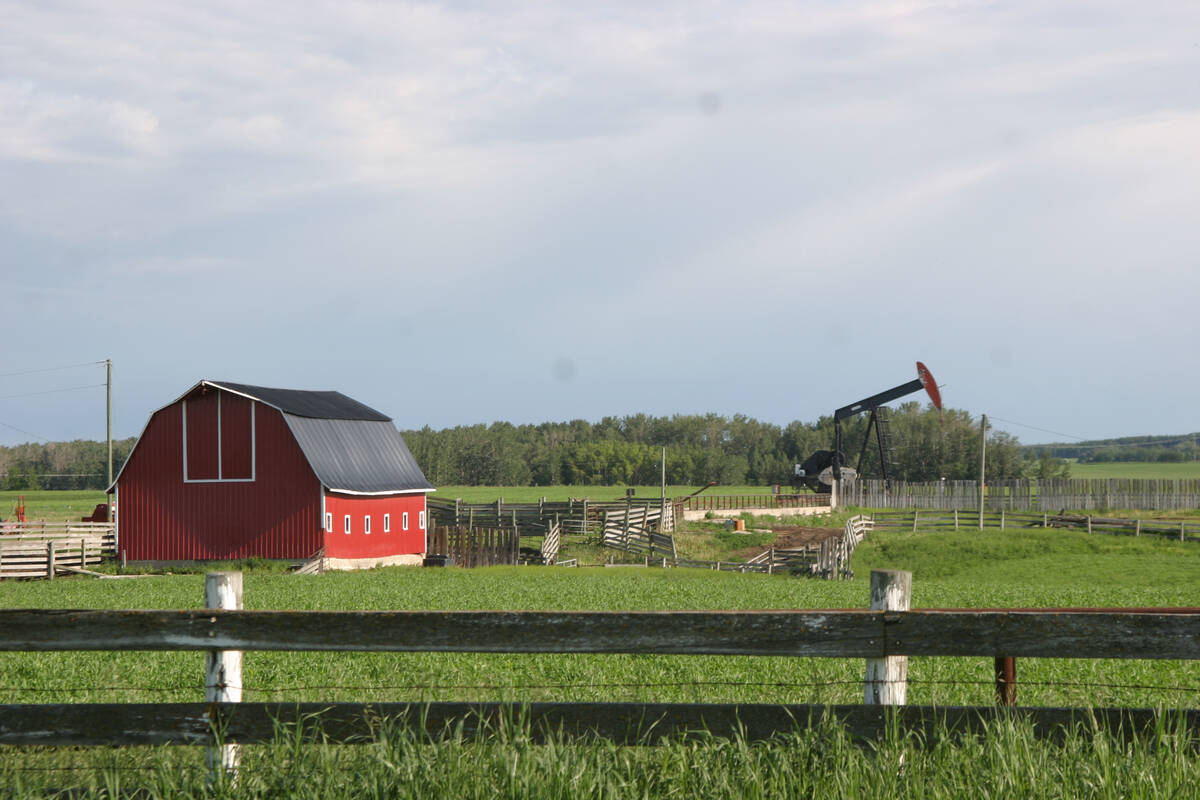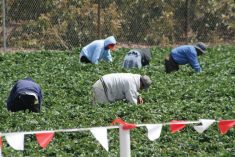Agricultural labour shortages across Canada have doubled over the past 10 years and could double again by 2029.
In its most recent labour market forecast, the Canadian Agricultural Human Resource Council found there were 63,000 unfilled positions in the sector last year — up from 30,000 unfilled positions in 2004.
And that number is expected to soar to 123,000 vacant positions by 2029.

“What we’re seeing is a doubling of the shortages every 10 years, and that’s pretty troubling,” said Portia MacDonald-Dewhirst, the council’s executive director.
“These shortages are impacting all commodities and almost all regions in Canada.”
Agriculture has historically had a high vacancy rate compared to other industries, she said. At 5.4 per cent, it’s almost double the national average (of about 2.9 per cent) even though almost 60,000 temporary foreign workers have been brought in to fill the gaps.
Those shortages are only going to get worse, said MacDonald-Dewhirst.
“The demographics are such that many people in the agriculture industry are retiring. There needs to be some new entrants in order to fill positions.”
But finding new workers is getting tougher.
“Canada’s population is focused and concentrated in urban centres, and we haven’t seen any increases in rural populations over many, many decades,” she said. “That’s a challenge when you’re trying to hire for positions that are in rural locations.”

Urban-rural divide
For people in urban centres, agriculture simply isn’t top of mind as a career choice. In many cases, they’re not sure what a career in agriculture looks like or how they might fit into the industry.
“Increasingly, people are becoming just that much more removed from their agricultural roots,” she said. “So when we or our children are contemplating careers, we’re not thinking about the ag industry or about bringing our skill sets to that industry.”
There’s also a perception among job seekers that they can’t work in agriculture because they didn’t grow up on a farm, she added.
“That’s not true of any other occupation. We don’t hear kids say, ‘I can’t be a doctor because my mom’s not a doctor.’ It’s a real throwback to how things used to be,” she said. “We need to break down some of the myths that exist about the industry, but also open people’s eyes about the fact that the industry is growing and thriving.”
Read Also

Recommendations in the mature assets strategy could cause potential problems for landholders
The Western Stock Growers’ Association urges producers to pay attention to the potential changes to Alberta’s Mature Assets Strategy.
Farming — and working in agriculture in general — does come with a steep learning curve for people without a farm background and some producers are reluctant to put in the necessary time to train new employees.
“It’s definitely challenging, but the farming community is interested in filling positions that are vacant,” said MacDonald-Dewhirst.
“These businesses are motivated to find ways to fill vacancies in any way that’s possible. That means that hiring Canadians first is, of course, a priority, and when Canadians can’t be found, then farmers are thinking about international workers.”
But there are untapped labour sources here in Canada that farmers should be exploring, including urbanites, Aboriginals, and new Canadians.
“There’s more work to be done on tapping into those underrepresented groups,” she said.
Breaking down barriers
That comes with its own set of challenges.
Take, for instance, transportation. The rural nature of most on-farm and some agribusiness jobs makes it harder to attract workers from outside a limited geographic area, and that’s become even harder as an increasing number of Canadians are using alternate forms of transport to commute to and from work.
For example, the 2016 census found about 18 per cent of Edmontonians said they don’t use cars to get to work (instead using public transit, walking, or cycling). In Calgary, that figure was 23 per cent.
So some ag operations now bus in urban workers, but that’s not an option for everyone, said MacDonald-Dewhirst.
“That only works if they’re close enough (to an urban centre),” she said. “Not many people are going to want to sit on a bus for three hours to get to a more rural location each and every day.”

Others offer on-farm housing to mitigate that, she added.
“There are barriers that are possible to break down and others that aren’t so easily broken down. It’s a complicated issue. It’s definitely multi-faceted.”
Agriculture also faces some stereotypes that can be hard to overcome for urban job seekers. In many cases, people living in towns and cities don’t really know what happens on a typical farm, and their perceptions are often shaped by what they read online. So issues such as animal welfare, farm safety, and environmental sustainability are becoming more and more important not only for consumers but also for farm workers.
Wages and benefits are also an issue and can be a challenge in a narrow-margin industry like agriculture.
Costly job vacancies
As these labour shortages increase, though, the industry needs to “do more promotion of what a great place it is to work,” said MacDonald-Dewhirst.
“It’s an industry that people are really proud about working in,” she said. “There are a lot of feel-good notions about working in the industry, and we all have to do a better job of explaining that.”
Farmers also need to do a better job of highlighting the specific benefits they offer, she added. If you offer flexible work hours, dinners every night through harvest, training, service awards, or other non-monetary benefits, you can — and should — advertise those things during your hiring process.
“A lot of times, farmers assume people know that that’s what they’re going to get if they get into this business, and if you’re new to the industry, you don’t necessarily know that there are these benefits,” said MacDonald-Dewhirst.
Her organization also offers a human resources tool kit.
“It’s something that we’ve built with the farming community for the farming community,” she said. “For $99 a year, a farmer can access this material and get the latest and best practices around how to do recruitment and selection and training and performance management.”
That’s particularly critical during a labour crisis, she added.
“You don’t want to lose any of the people you have, but when you do lose somebody, you want to make sure that the person you bring in is somebody who’s going to be contributing and effective in your team.”
And the alternative — leaving those positions unfilled — could put a big dent in your bottom line.
“Right now, we know there are extensive costs associated with vacancies,” said MacDonald-Dewhirst.
“In 2014, we reported that primary producers across Canada were losing $1.5 billion worth of sales. Four years later, that figure had doubled to $2.9 billion. It’s really troubling the expensive losses that are being experienced because positions are sitting empty.”
And for some farmers, the stress of those vacancies — both in terms of added workload and added costs — is enough to make them throw in the towel entirely.
“When farmers are unable to depend on a reliable labour supply, they think long and hard about whether they’re going to stay in this business,” said MacDonald-Dewhirst.
“There are lots and lots of impacts that are already being felt and are likely only going to worsen over time.”















